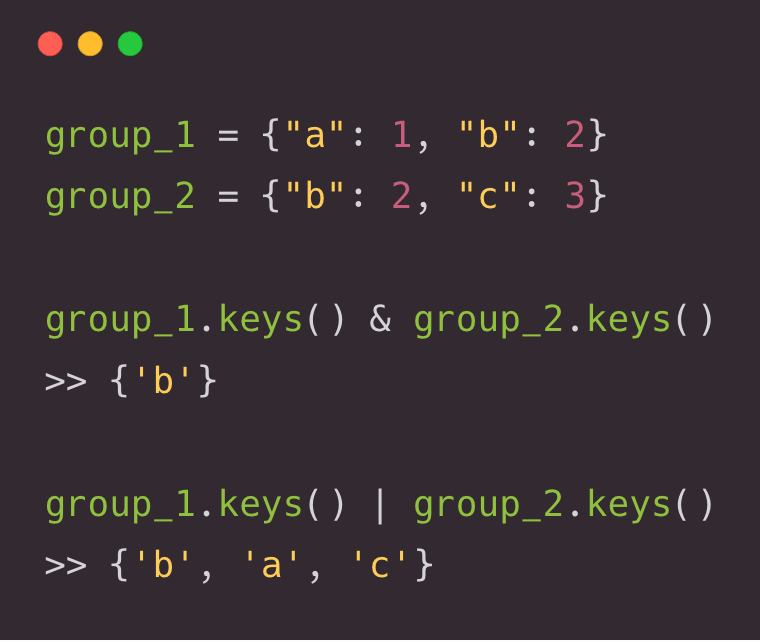
 Christian Barra@christianbarra
Christian Barra@christianbarra Did you know that "dict.keys()" returns a view that is a set-like object? #Python12:12 PM - 31 Jul 2018
Did you know that "dict.keys()" returns a view that is a set-like object? #Python12:12 PM - 31 Jul 2018
Dictionary is one of the Python's greatest features and using the keys(), items() and values() methods is really common.
first_dictionary = {"a": 1, "b": 2}
for key, value in first_dictionary.items():
print(f"Key {key} with value {value}")
# Key a with value 1
# Key b with value 2
But do you know which kind of object is returned?
They all return a special object, called view.
Why are views useful?
- they provide a dynamic view on the underline object (you change the dictionary and the view will change as well)
- the object returned by
keys()anditems()behaves like a set-like object (withitems()when the pairs are hashable)
And being a set-like object means you can use the set operations.
Let's consider an example, where we want to find the common keys between 2 dictionaries.
first_dictionary = {"a": 1, "b": 2}
second_dictionary = {"b": 2, "c": 3}
first_dictionary.keys() & second_dictionary.keys()
# {'b'}
& is the intersection operator and returns the common elements between our dictionaries' keys in this case.
What about the elements that are not in common?
first_dictionary = {"a": 1, "b": 2}
second_dictionary = {"b": 2, "c": 3}
first_dictionary.keys() ^ second_dictionary.keys()
# {'a', 'c'}
This is called simmetric difference.
One thing that you cannot do is change the dictionary while iterating over the view object.
for key, value in first_dictionary.items():
del first_dictionary[key]
Traceback (most recent call last):
File "<stdin>", line 1, in <module>
RuntimeError: dictionary changed size during iteration


Top comments (0)